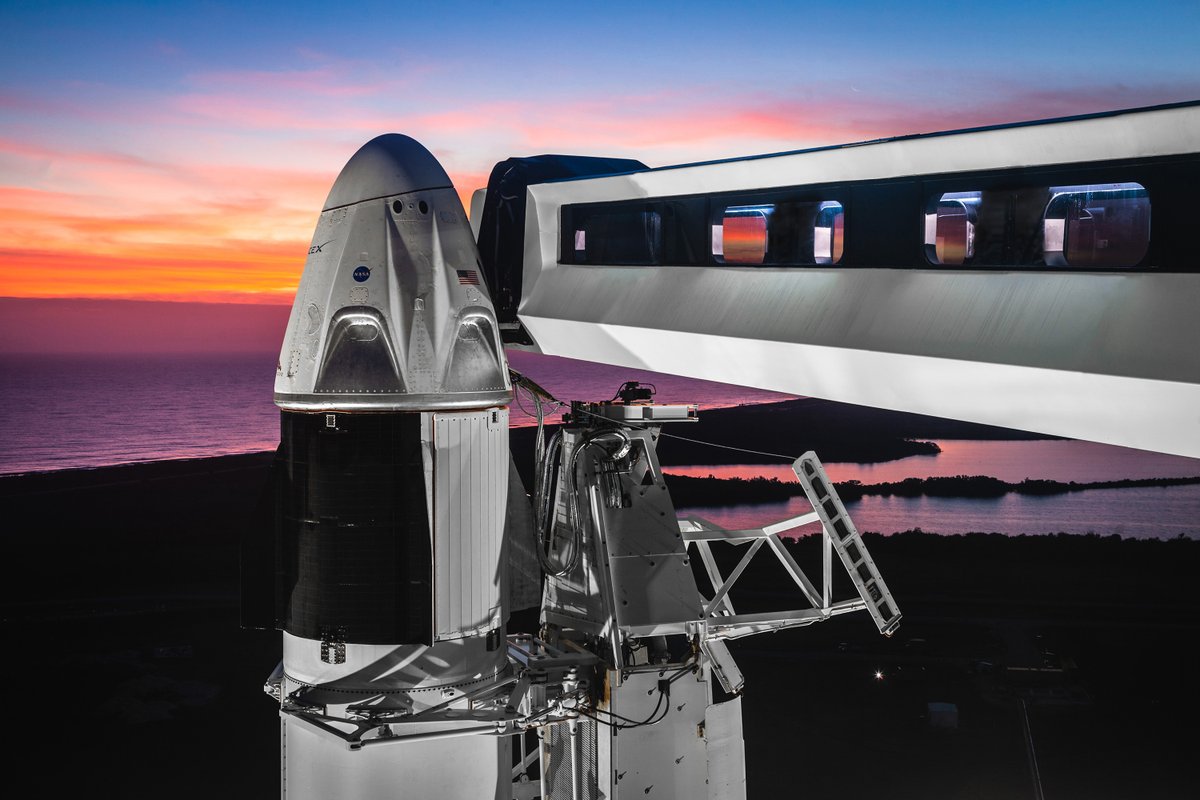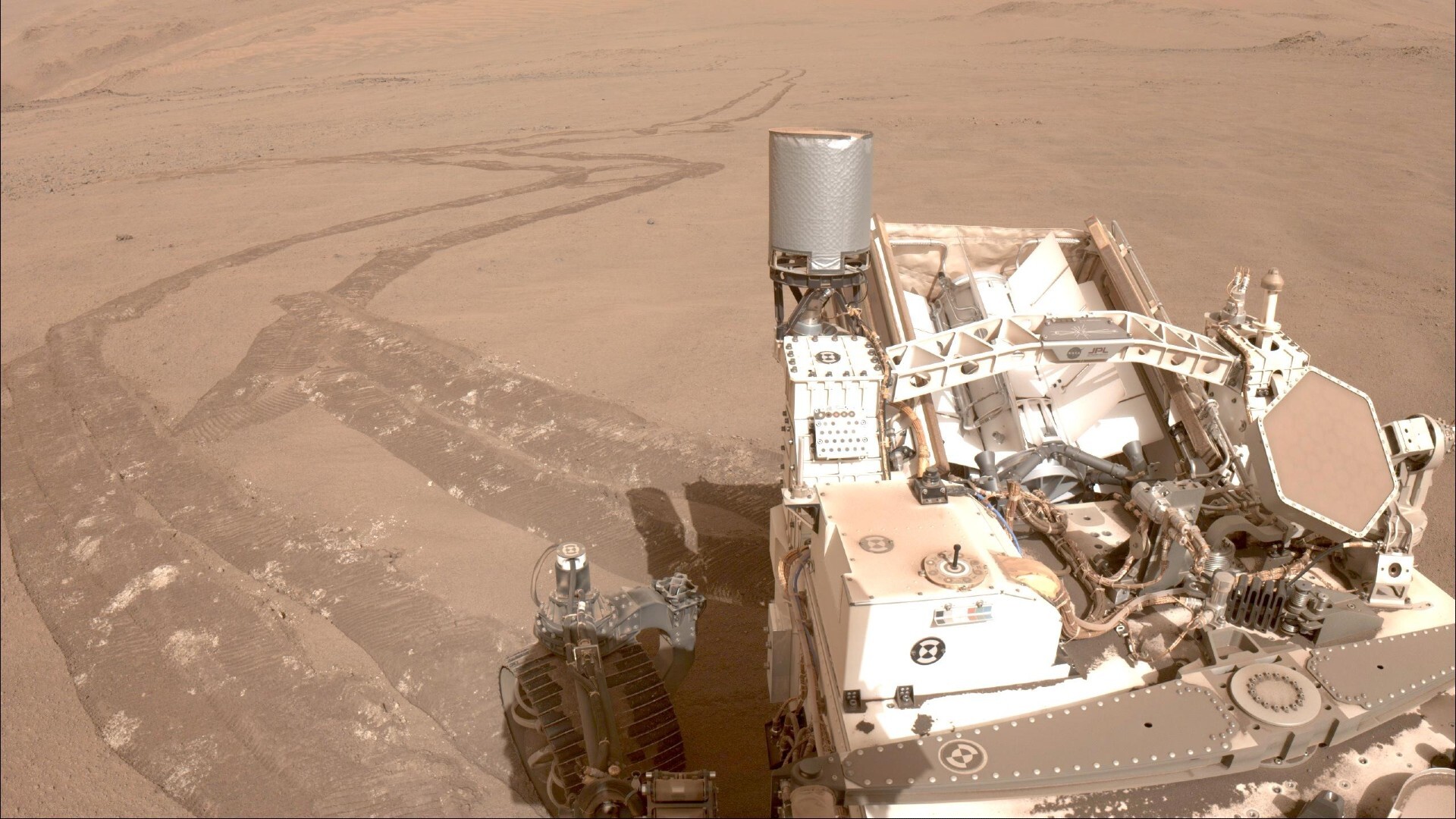SpaceX Will Launch Its 1st Crew Dragon for NASA Soon! How to Watch It All Live.
Liftoff is set for Saturday, March 2!
Updated on Feb. 28: SpaceX is poised to make history Saturday (March 2) with the first-ever test flight of a private spaceship built to carry astronauts into orbit. That Crew Dragon Demo-1 mission won't carry astronauts, but it will be the first launch of a spacecraft built for humans from U.S. soil since 2011 and you can watch it all live.
SpaceX will launch the Crew Dragon Demo-1 mission at 2:48 a.m. EST (0748 GMT) on Saturday, March 2. Since Crew Dragon is designed to ferry NASA astronauts to and from the International Space Station, you can expect a live webcast of the launch from the space agency.
Space.com will carry NASA's Crew Dragon webcasts here over the next week. You'll also be able to watch NASA's webcasts on NASA TV, and SpaceX will likely provide its own webcast here. Scroll down to see when to tune in for the first Crew Dragon launch.
Related: SpaceX Dragon Crew Demo-1 Flight: What to Expect
Countdown to launch
The action began on Friday (Feb. 22), when NASA held a press conference no earlier to discuss a post-flight readiness review briefing of NASA and SpaceX mission managers. That meeting, known as an FRR in NASA-speak, included final discussions and reviews to make sure a mission is ready for flight. It was during that meeting that NASA and SpaceX officially gave the "go" for Crew Dragon's launch.
Two days before launch, on Thursday, Feb. 28, NASA will hold a pre-launch press conference to discuss the launch once more. That briefing will begin at 4 p.m. EST (2100 GMT) and should last about an hour. Representatives from NASA's Commercial Crew Program, International Space Station Program and Astronaut Office will be joined by a SpaceX representatives to go over final details for the mission.
Related: Take a Walk Through SpaceX's Crew Dragon
Breaking space news, the latest updates on rocket launches, skywatching events and more!
March 2: Launch Day
The launch day webcast events in the wee hours of Saturday at 2 a.m. EST (0700 GMT). The launch itself, as stated above, is at 2:48 a.m. EST. SpaceX's webcast will likely start a bit later than NASA's, as they typically begin about 15 minutes before liftoff.
At 5 a.m. EST (1000 GMT), NASA and SpaceX will hold a post-launch press conference with agency and SpaceX representatives.
In Photos: A Behind-the-Scenes Look at Crew Dragon
March 3: Space station arrival
It will take SpaceX's Crew Dragon just over 27 hours to reach the International Space Station after launch.
The spacecraft will arrive at the station Sunday, March 3. NASA's live coverage will begin at 3:30 a.m. EST (0830 GMT), with docking occurring at 5:55 a.m. EST (1055 GMT). Unlike SpaceX's Dragon cargo vehicles, which are captured by the station's robotic arm and attached to an open berth, Crew Dragons are designed to dock themselves.
About five hours after Crew Dragon docks, astronauts will open the hatches between the station and the visiting spacecraft. NASA's live coverage of that event will begin at 8:45 a.m. EST (1345 GMT).
A special welcome ceremony by the station's crew will follow at 10:30 a.m. EST (1530 GMT). The Demo-1 Crew Dragon will deliver about 400 lbs. (181 kilograms) of supplies and gear for the station crew, NASA officials said.
Crew Dragon and Starliner: A Look at the Upcoming Astronaut Taxis
March 8: Return to Earth
The Demo-1 Crew Dragon will remain linked to the space station for five days before returning to Earth. Undocking is currently scheduled for Friday, March 8. Here's what to expect.
NASA's live coverage will begin at 12:15 a.m. EST (0515 GMT), when station astronauts will close the hatches between their spacecraft and Crew Dragon.
The real action begins at 2:30 a.m. EST (0730 GMT), when NASA's undocking coverage begins. You can expect undocking to occur sometime shortly after the webcast starts, but once Crew Dragon departs the vicinity of the station NASA may pause its commentary for a few hours.
At 7:30 a.m. EST (1230 GMT), NASA will begin its Crew Dragon deorbit and landing coverage. While SpaceX and NASA did not announce a specific splashdown time, Crew Dragon is expected to conduct its deorbit burn about 5 hours after leaving the space station. The deorbit burn will last 10 minutes, after which it will take Crew Dragon 30 minutes to re-enter the atmosphere, deploy parachutes and splash down in the Atlantic Ocean.
At some point after splashdown, NASA will hold a post-landing press conference on NASA TV. The exact time and location of that has not yet been released.
SpaceX's Dragon cargo ships splash down in the Pacific Ocean and are retrieved by a recovery ship. Nominal Crew Dragon missions, however, are expected to splash down off the eastern coast of Florida to be retrieved by SpaceX's Go Searcher recovery ship.
At some point after splashdown, NASA will hold a post-landing press conference on NASA TV. The exact time and location of that has not yet been released.
SpaceX’s Crew Dragon: A Private Space Taxi in Photos
More test flights
If all goes well with the Demo-1 Crew Dragon mission, SpaceX will launch to more big test flights: an in-flight abort test and the first crewed spaceflight.
In June, SpaceX plans to launch an in-flight abort test to demonstration the Crew Dragon's escape system. The spacecraft is equipped with eight SuperDraco thrusters to pull a Crew Dragon free of its Falcon 9 rocket during an emergency.
If that abort test goes well, SpaceX will proceed with a crewed test flight in July, NASA officials have said.
SpaceX is one of two commercial companies picked by NASA to fly astronauts to and from the space station. The other company is Boeing, which will launch astronauts on its CST-100 Starliner spacecraft and Atlas V rockets.
NASA awarded SpaceX a $2.6 billion contract in 2014 to develop Crew Dragon for astronaut flights. Boeing received $4.2 billion from NASA to support Starliner development.
Note: Here's a link to NASA's full broadcast schedule for the Crew Dragon mission. NASA will also post mission updates at its Commercial Crew site here, and this launch blog.
Email Tariq Malik at tmalik@space.com or follow him @tariqjmalik. Follow us @Spacedotcom and Facebook.

Tariq is the award-winning Editor-in-Chief of Space.com and joined the team in 2001. He covers human spaceflight, as well as skywatching and entertainment. He became Space.com's Editor-in-Chief in 2019. Before joining Space.com, Tariq was a staff reporter for The Los Angeles Times covering education and city beats in La Habra, Fullerton and Huntington Beach. He's a recipient of the 2022 Harry Kolcum Award for excellence in space reporting and the 2025 Space Pioneer Award from the National Space Society. He is an Eagle Scout and Space Camp alum with journalism degrees from the USC and NYU. You can find Tariq at Space.com and as the co-host to the This Week In Space podcast on the TWiT network. To see his latest project, you can follow Tariq on Twitter @tariqjmalik.


